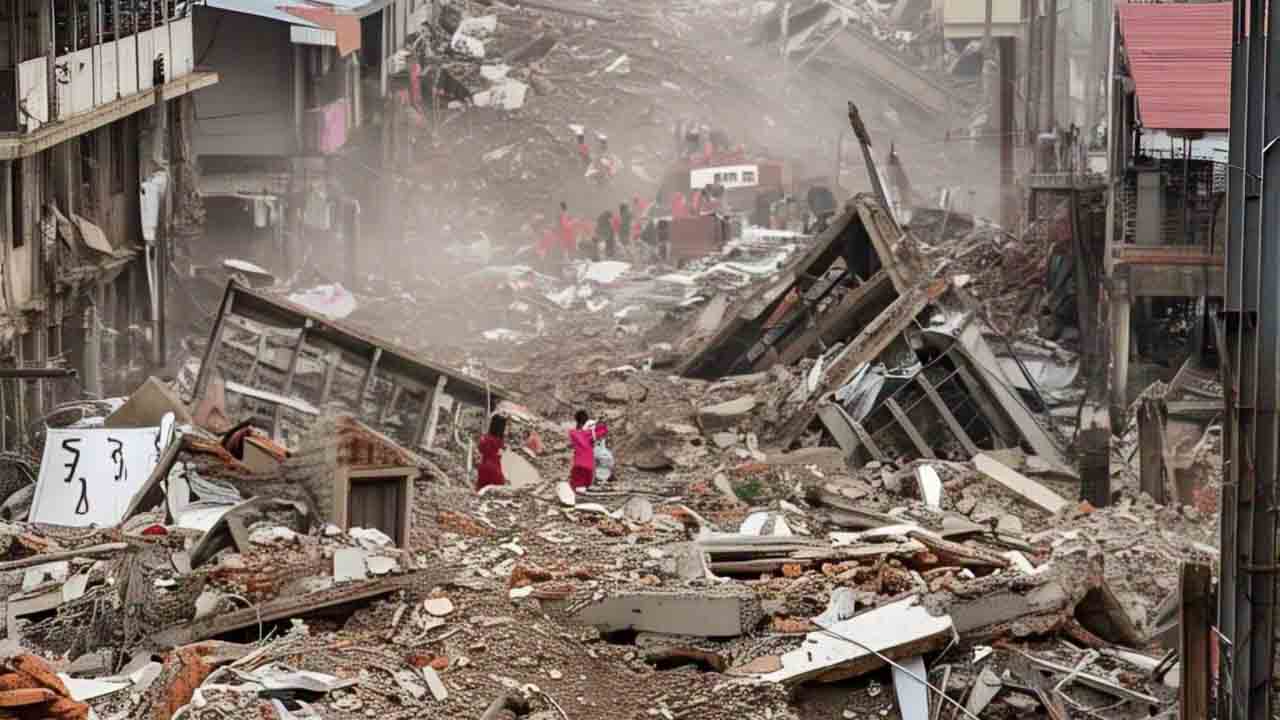
Arcadiadaily – The Deadly Myanmar Earthquake, which struck with a magnitude of 7.7 on the Richter scale, has left a devastating toll across Myanmar and Thailand. As of today, the official death count has surpassed 3,300, with many more still missing under the rubble. This tragic event has not only caused immense loss of life but has also prompted a temporary ceasefire among the factions involved in Myanmar’s ongoing internal conflict. The situation remains dire, and the country faces an uphill battle as it tries to recover and provide aid to its citizens.
The Deadly Myanmar Earthquake hit with overwhelming force, causing widespread devastation in both Myanmar and Thailand. It was one of the most powerful earthquakes to strike the region in recent years. Entire buildings and infrastructure collapsed, leaving thousands trapped in the debris. Rescue operations are ongoing, but the terrain and the sheer scale of the disaster have made it difficult to reach all affected areas. The earthquake’s epicenter was located in the northern part of Myanmar, close to the border with Thailand, where it caused the most significant damage.
Local authorities, together with international aid organizations, are working tirelessly to rescue survivors and provide emergency assistance. However, the lack of resources and coordination due to Myanmar’s internal conflicts has slowed down the relief process. Thousands of families have been displaced, and many more are feared to be trapped under collapsed structures. The authorities are urging global humanitarian organizations to help increase the speed and effectiveness of the recovery efforts.
“Cummins Launches B7.2 Diesel Engine for Mid-Duty Use”
In an unexpected turn of events, the Deadly Myanmar Earthquake has led to a temporary ceasefire between the warring factions in Myanmar. Several militant groups, who have been engaged in conflict with the government. Announced a suspension of hostilities to allow for relief efforts to reach the affected populations. While this ceasefire has provided a brief moment of respite, the political situation in Myanmar remains precarious. This pause in fighting could pave the way for future diplomatic negotiations, but it remains uncertain whether this will lead to long-term peace.
The international community has expressed cautious optimism over this temporary ceasefire. Hoping that it will result in increased cooperation between various groups to address the needs of the affected populations. The situation, however, remains volatile, and the coming weeks will be crucial in determining whether this ceasefire holds and if the relief efforts can be expanded effectively.
The Deadly Myanmar Earthquake has highlighted the vulnerability of the region. Not only in terms of natural disasters but also due to the ongoing conflicts that hinder relief and recovery operations. As the international community rallies to provide aid. There is a clear need for greater cooperation and long-term investment in disaster preparedness. Myanmar’s recovery from this catastrophe will be a long and arduous process. Requiring both immediate aid and long-term support for infrastructure rebuilding, economic recovery, and social healing.
In the coming weeks, as the search for survivors continues. The focus will shift toward rebuilding the damaged areas and providing support for the displaced. The scale of the disaster, combined with Myanmar’s complex political environment, presents a challenge. But there is hope that the global response will be enough to support the nation in its time of crisis.
“AI and Writers: Redefining the Creative Process”